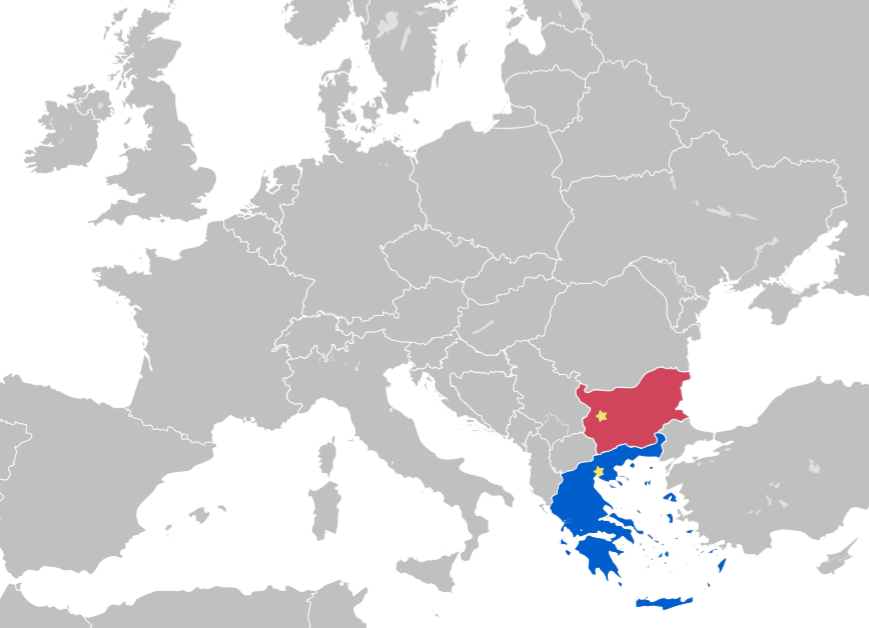Sofia and Thessaloniki
What to say about 2 cities, seeming to be so close yet different?

… only a small window of the world [By: maix¿? [CC BY-SA 2.5 (http://creativecommons.org/licenses/by-sa/2.5)], via Wikimedia Commons, 16.9.2016]
You’ll find a higher-definiton map here.
София (Sofia)
…
Θεσσαλονίκη (Thessaloniki, Saloniki, Salonika)
With 325.000 inhabitants in a metropolitan area of almost 1 million people, Thessaloniki is the capital of Central Macedonia. It is situated in the northeast of the Greek mainland, directly next to the Aegean Sea and reaching out up the hills. Thessaloniki has amongst other belonged to the romanic, byzantine and ottomanic empire and has therefore been a junction for east-west and north-south traffic since thousands of years. Here is why it is today a vivid and culturally diverse city, that has much more to offer than the white tower. As the second largest city of Greece, Thessaloniki hosts two of the biggest Universities of the country and is an economically important hub because of its trade fair, industries and harbor.
The city, that has been called “Jerusalem of the Balkans” for many years – because of its high percentage of jewish citizens – suffered a lot from disputes in the early 19th century, like the two Balkan Wars, the Greco-Turkish War and the two World Wars. Especially the Second World War traumatized the city, because it was not only occupied by German troops, but also almost 50.000 jewish inhabitants were killed in Auschwitz by the Nazis. Only a few decades later, many north Greek people emigrate to Germany to work as “Gastarbeiter” – many of them return, so that today 10 % of the Greek population, have lived in Germany and thus, their knowledge of the language is great.